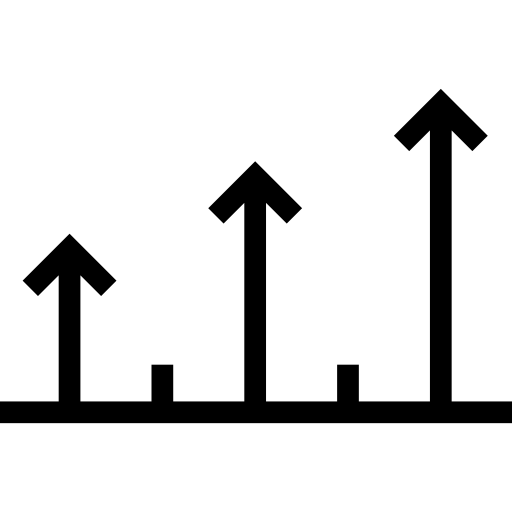
Starting date : Sept. 2017 > Feb. 2020
Lifetime: 30 months

Program in support : H2020

Status project : complete

CEA-Leti's contact :
Sylvie Mayrargue
Bernard Strée

Project Coordinator: University of Surrey (UK)
Partners: - FR: CEA-Leti
- GR: Wings ICT Solutions Ltd
- NL: Netherlands Organisation for Applied Scientific Research
- TR: Argela, Turk Telekom
- TW: Adlink Technology Inc., Fair Friends EnterpriseCo, Institute for Information Industry, National Taiwan University
- UK: Toshiba Research Europe

Target market: n/a

Publications:
«LPWA Deployment for Factory of the Future: LoRa or
Turbo-FSK Based Technology?» A. Guizar, M. Nunez,
V. Mannoni and M. Maman PIMRC 2019 IEEE 30th Annual
International Symposium on Personal 8-11 Sept 2019.

Investment: € 3.5 m.
EC Contribution: € 2.5 m.

| Stakes
Physical Layer Security CEA-Leti has performed a state-of-the-art review of the sensitivity of 3G, 4G and the first standardized version of 5G NR (Release 15) to jamming attacks. CEA-Leti has reviewed the work of Technical Specification Group TSG-SA3, in charge of security issues, with a focus on the security of messages exchanged over the air interface (SUPI encryption, data confidentiality and integrity) and vulnerability to attacks by a quantum computer. CEA-Leti has focused on using AES-256 as a cryptographic algorithm for the FoF. The approach’s main characteristic is that it is assumed that the adversary knows neither the plaintext nor the ciphertext, which is a usual assumption in conventional side channel attacks. A simulation environment was developed to validate the efficiency of the attack based on a message-passing algorithm. Its performance was established and it was shown to be theoretically efficient. The attack was implemented on a hardware item. However, careful characterization of information leakage showed that leakage in some operations could be exploited but was too weak in other operations required to run the message-passing algorithm. It was therefore impossible to certify the feasibility of the attack. A combination with other techniques (template attack or deep learning attack) should be investigated in response to this issue.
Heterogeneous Radio Access Use of multiple heterogeneous radio access technologies and spectrum bands brings new challenges to MAC design. For example, how to select and switch between multiple radio access technologies is key to both resource utilization and individual performance in terms of throughput and latency. CEA-Leti has studied the performance and limitations of two Low Power Wide Area (LPWA) solutions, namely Turbo-FSK and LoRa, in terms of reliability, scalability, spectral efficiency, energy consumption and flexibility. The second step was to propose a dual technology network, in which LPWA technologies are used implemented with a 5G beacon for time synchronization. CEA-Leti has investigated how a scheduled version of Lo- RaWAN with an optimized allocation of its spreading factors (SFs) can outperform random SF allocation and increase the number of devices that can be simultaneously served.
Clear5G’s aim is to design, develop, validate and demonstrate an integrated convergent wireless network for Machine Type and Mission Critical Communication (MTC/MCC) services for Factories of the Future (FoF). Clear5G will deliver technical solutions addressing the challenges of mass deployment of connected devices, security, ultralow latency and ultra-high reliability in FoF applications including remote maintenance and closed loop control systems. The requirements of these complex scenarios will be met through convergence of different wireless technologies enabled by the protocol and architecture enhancements proposed by Clear5G. Clear5G focuses on providing PHY, MAC and architectural enhancements to meet the strict requirements of FoF applications in terms of KPIs: latency, reliability, connection density, spectrum and energy efficiency and the project therefore contributes to ITU-R objectives (e.g. 1000-fold connection density) for the next generation mobile network. The Clear5G team comprises a combination of successful, innovative, well-known, major European and Taiwanese corporations and SMEs along with research and academic institutions. The partners have proven know-how in architecture, resource management, protocol enhancements, standardization, prototyping and demonstration. Proof of concepts will be tested on Europe’s 5GIC testbed, while final system demonstration of close integration and cooperation of the manufacturing sector and the Clear5G enhanced network will be implemented on Taiwan’s III testbed. Clear5G brings together a strong and diverse set of European and Taiwanese partners including partners from the FoF sector. The complementarity of team, skills and expertise brings added value to 5G research on both sides and will deepen international cooperation, serving as a showcase of 5G empowering vertical industries. The partners will contribute to relevant standardization in both the communication and the manufacturing domains.
IMPACT
CEA-Leti has evaluated a novel side channel attack on AES-256 that could be used in the context of the Factory of the Future. It effectiveness has been established based on simulation. Practical implementation of the attack could not be certified because the leakage extraction procedure was inefficient. Other leakage extraction techniques should be investigated to evaluate the vulnerability of hardware devices connected through 5G NR links. This work has not yet been published but could have an impact on the security of factories using 5G NR connections between devices.
CEA-Leti has developed new MAC layer functionalities, ensuring compatibility with the LoRaWAN standard MAC commands. Assuming an external beacon, CEA-Leti has developed an optimized SF allocation algorithm for LoRa uplink data packets. This new scheme allows an increase in the number of devices that can be simultaneously served compared with the conventional random SF allocation.
|
|